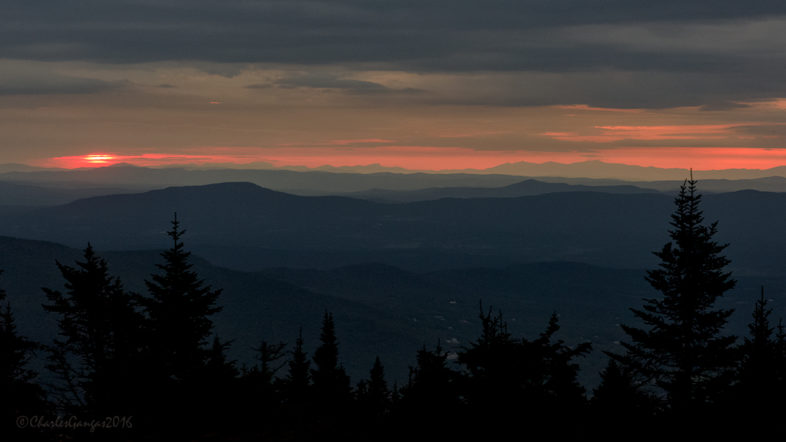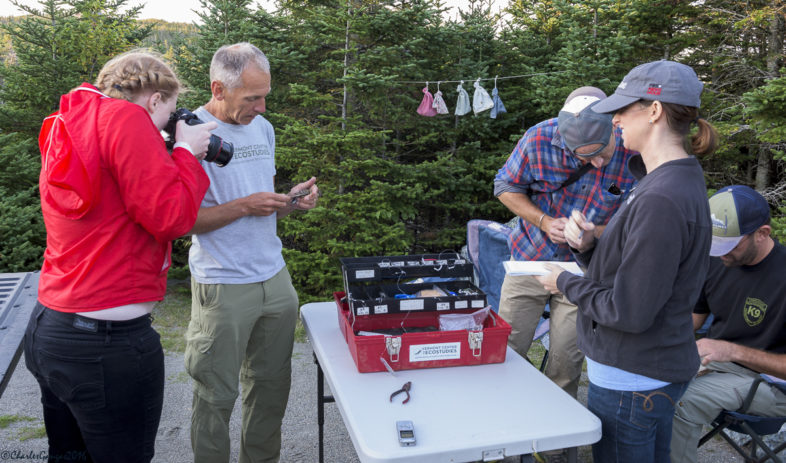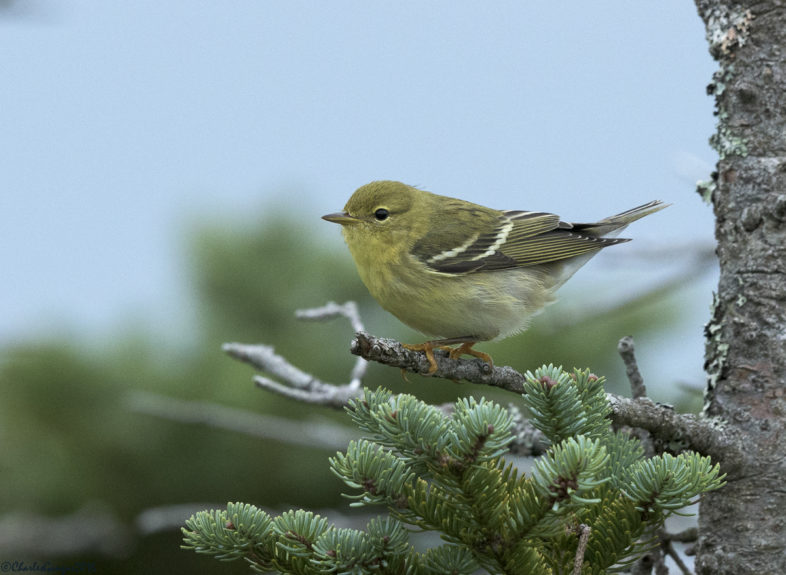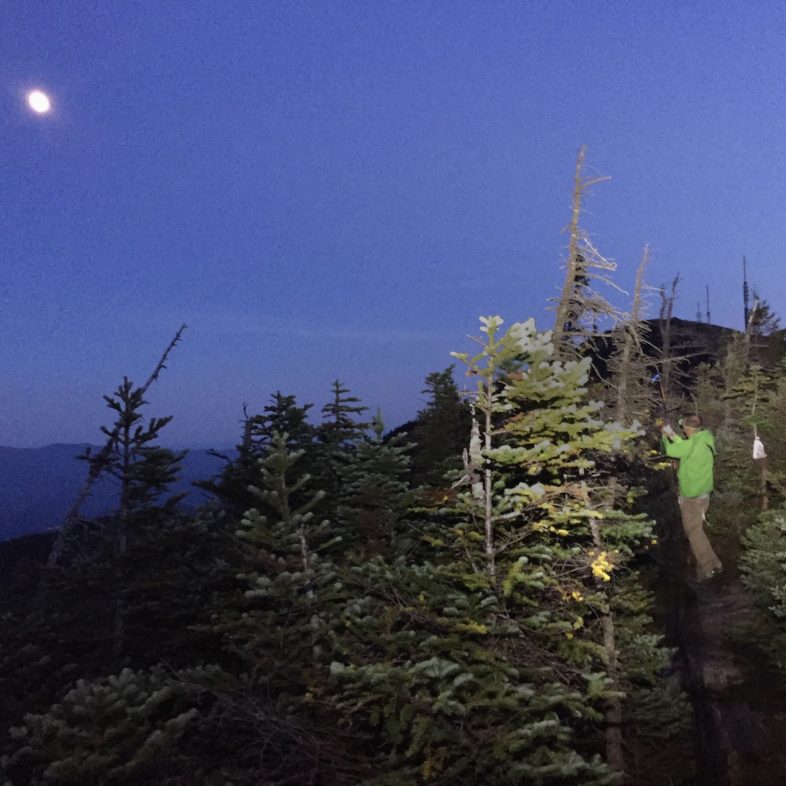VCE’s 2016 field season on Mt. Mansfield wrapped up with a flourish on September 13-14, as both weather and birds made dramatic appearances. Kent McFarland, John Lloyd, UMass colleague Bill DeLuca and I returned to witness the annual mid-September resurgence of Bicknell’s Thrush (BITH) activity. We arrived on the ridgeline at 5 pm on Tuesday to set up 20 mist nets, mainly on the Amherst, Lakeview and Long trails. Winds were stiff from the west, temperatures cool, and birds quiet until about 7 pm, when 8-10 BITH piped up, calling and even singing with surprising vigor. For a songbird that is not territorial in the classic sense (an entire story unto itself), it’s a mystery why BITH resume vocalizing just prior to migration (most are gone by October 1), but this is a reliably annual phenomenon. Although we didn’t net a BITH that evening, we captured 10 birds (3 Blackpoll and 7 Yellow-rumped warblers) before closing our nets after dark.

Sunrise from the Mt. Mansfield ridgeline, with NH’s distant Presidential Range in sharp relief, 14 September 2016. Photo courtesy of Chuck Gangas.
Clouds began moving in at dawn, providing a striking sunrise, and the west wind slackened enough to allow for good netting conditions. BITH again announced their presence via a dawn “chorus” (though not nearly as robust as in mid-June). The first hour of netting was slow, but an approaching cold front ushered in a remarkable influx of migrants beginning ~7 am. Suddenly, and for the next 2 hours, our 20 nets were dripping with birds, several festooned with 9-10 at a time. We’ve never had such volume in 25 years, and we struggled to keep up at our banding table. If it hadn’t started raining at 9:00, there is no question we’d have had to close our nets and release many birds unbanded, just to avoid being overwhelmed. The rain and accompanying gusty winds left us no choice but to furl all nets, and leave them closed. We took our huge backlog of netted birds, with many bags holding 2-3 individuals, and retreated down the toll road to the ski patrol hut, where we finished banding, sheltered from the harsh elements.

The calm before the storm: Chris Rimmer measures a Blackpoll Warbler wing, while John Lloyd checks data with recorder Bill DeLuca, evening of 13 September 2016. Photo courtesy of Chuck Gangas.
Blackpoll Warblers were the undisputed bird of the day, as we apparently intercepted their migratory peak — we banded 46 individuals, more than in any single morning over the past 25 years, even during the autumns of 1995-97, when we banded on the ridgeline 5 days/week from mid-August to mid-October. Other notable species were 3 Tennessee Warblers, single Bay-breasted and Blackburnian warblers, and a Lincoln’s Sparrow. We captured 4 BITH, including 2 previously banded males — one first netted as an immature on 16 Sept 2015 and recaptured this year in June, and a second that we first banded on 3 June 2011 and have caught every year since. Our only other recapture was of an adult male White-throated Sparrow that we banded on 23 June.

An immature Blackpoll Warbler, one of many that swamped the Mt. Mansfield ridgeline (and VCE’s nets), 14 September 2016. Photo courtesy of Chuck Gangas.
A PBS NewsHour reporter and photographer who joined us to craft a feature piece on Blackpoll Warblers definitely left with plenty of material, and a chilled soaking – the good, the bad and the ugly of studying mountaintop birds!
Our netting totals for the visit included 84 individuals of 11 species:
Hairy Woodpecker 1
Bicknell’s Thrush 4
Tennessee Warbler 3
Bay-breasted Warbler 1
Blackburnian Warbler 1
Blackpoll Warbler 46
Black-throated Blue Warbler 1
Yellow-rumped (Myrtle) Warbler 20
Dark-eyed (Slate-colored) Junco 5
White-throated Sparrow 1
Lincoln’s Sparrow 1
Other noteworthy sightings included a first-year Bald Eagle, Merlin, the usual gang of raucous Common Ravens, and an eastern chipmunk (scrounging in the parking lot at 3900′ elevation – the first we’ve seen up there this year). Red squirrels continue to be absent.
We’ll be back at it next May for year #26, after fully analyzing our first 25 years of banding-related research on Mansfield’s ridgeline over the winter. That promises to yield some fascinating insights.

